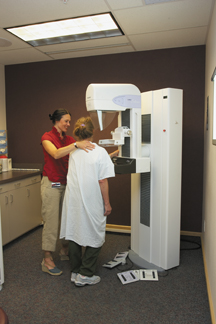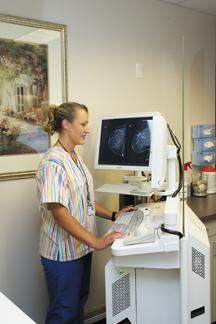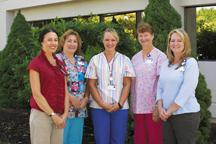
Kootenai Outpatient Imaging certainly gives a new meaning to the term “community hospital.” In addition to providing patients with the latest imaging technology, Kootenai’s efforts to improve women’s health extend far beyond the hospital doors. Whether it’s organizing the annual Race for the Cure or donating the center’s old analog equipment to overseas screening programs, the center’s board-certified radiologists and seasoned technologists are always looking to help those in need.
With the installation of two Hologic Selenia systems last year, Kootenai discovered that digital mammography was the perfect way to continue their commitment to patient-focused care – and improve their bottom line at the same time.
Transitioning to Digital
In April 2007, Kootenai Outpatient Imaging became the only facility in northern Idaho to offer digital mammography, serving five counties with a population of approximately 60,000. According to Manager Jen Neely, women in the community had been requesting digital for awhile.
In response to the community’s needs, Kootenai Outpatient Imaging had the same experience. With the help of careful preparation and a supportive Hologic sales team, they transitioned from three analog units to two Selenia systems and increased their volume by 25 percent – all without turmoil.
The overall process was “incredibly smooth,” according to Neely, who credits Kootenai’s own radiologists for helping the center to implement the latest technology.
“Digital mammography provides our patients with enhanced cancer detection by improving resolution of the images, particularly in women with dense breasts,” said Keith Hewel, M.D., one of Kootenai’s innovative radiologists. “The technology allows the radiologist to do post-processing of images at the workstation, with improved computer-aided detection. Repeat views are less frequent, and images are acquired much faster. Our rate of detection has improved since installing this state-of-the-art modality.”
In the first year of operating the Selenia digital mammography equipment, Kootenai’s breast cancer detection rate increased 25 percent from 5.2 to 6.5 cancers detected per 1,000 screenings.
The success of Kootenai’s digital transition is evident in the numbers. While operating three exam schedules on two machines, they have reduced the exam time for screenings to 10 minutes, down from 15 minutes with analog. The center’s annual volume, which averaged around 13,000 in previous years, increased to more than 14,000 in 2007.
According to Neely, the expanded capacity digital provides increased their scheduling flexibility, enabling them to accommodate patients who run a few minutes late or come in on the wrong day. “Patients also like that we can remain in the room with them for the entire exam,” she added. “Digital has really helped us be more patient-focused.”
Looking Out for the Patients
Kootenai’s commitment to its patients doesn’t even take a break on weekends. In January 2008, Kootenai began offering Saturday appointments to make it easier for working women to get their mammograms. Thus far, the new schedule appears to be a success for both the patients and for Kootenai.
“Patients have been really receptive. It works for their schedules, because they don’t have to race over on their lunch hour or come in early before work,” Neely says.
Kootenai also works to increase access to breast health services for its community’s underserved women through its affiliation with the Coeur d’Alene Affiliate of the Susan G. Komen Race for the Cure. Each year, the center organizes a team for the local Komen Race for the Cure, and 25 percent of the event’s net proceeds go directly to breast cancer research, while the rest remains in the community to provide grants to the area’s underserved population. The funds help cover the cost of screening and diagnostic mammograms, breast biopsies, ultrasounds and other screening programs.
Hologic Eases Transition
When it came time to choose a digital mammography system, it didn’t take long for Kootenai to decide on Hologic. They examined a variety of factors, including the company’s reputation and reliability of the equipment, but it mostly came down to image quality.
“The radiologists definitely favored Hologic because of the image quality,” Neely said. “We looked at various pieces of equipment and felt Hologic was by far the best. Not only for being user-friendly for our technologists, but for having the best image quality for our patients.”
Neely performed Kootenai’s first digital exam in April 2007. Both she and the patient – a 40-year old cancer survivor having her first post-mastectomy mammogram – were blown away by the quality of the digital images that appeared on the monitor.
“Her images were so incredible. Even with her dense breasts, the level of detail we were able to get was amazing, especially when we compared them to last year’s images,” Neely said. “It was absolutely amazing. This is the reason we have digital.”
Between the dedicated customer service and quality equipment, Kootenai has made a habit out of partnering with Hologic for their technology needs. In addition to purchasing the two Selenia systems, the imaging center also upgraded their stereotactic biopsy suite with a Hologic MultiCare Platinum prone biopsy table. They use Hologic’s Discovery bone densitometry scanner for their bone health assessments and the Suros ATEC system for breast biopsies.




 December 17, 2025
December 17, 2025 









